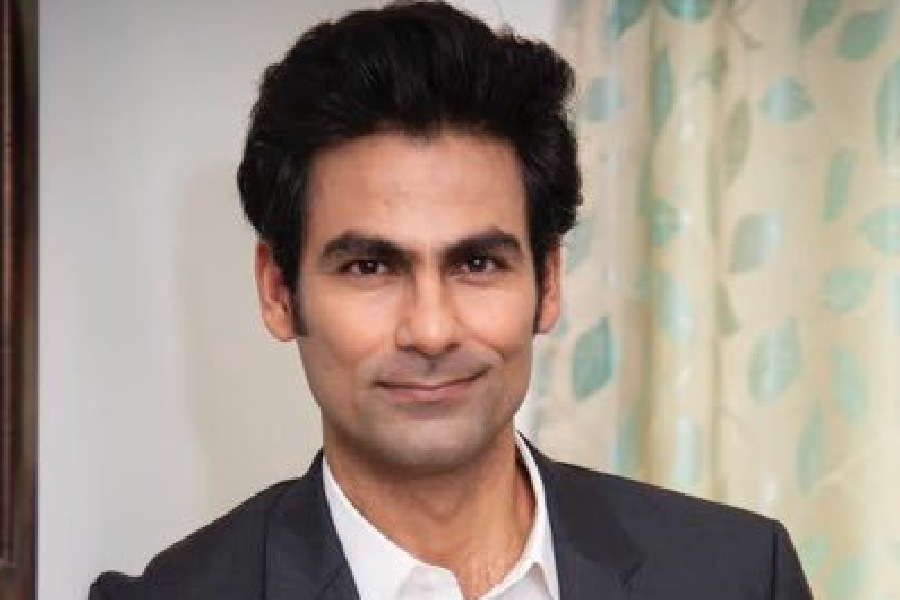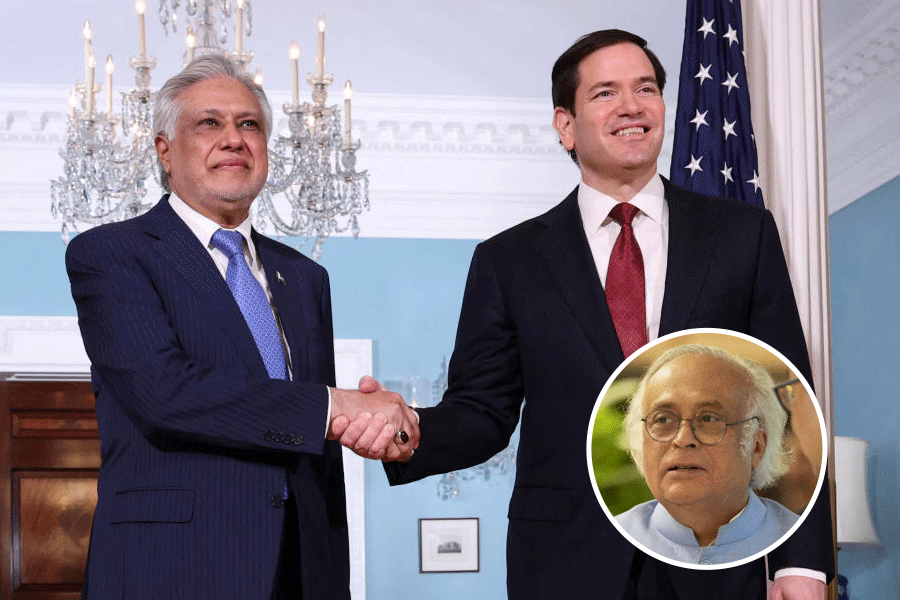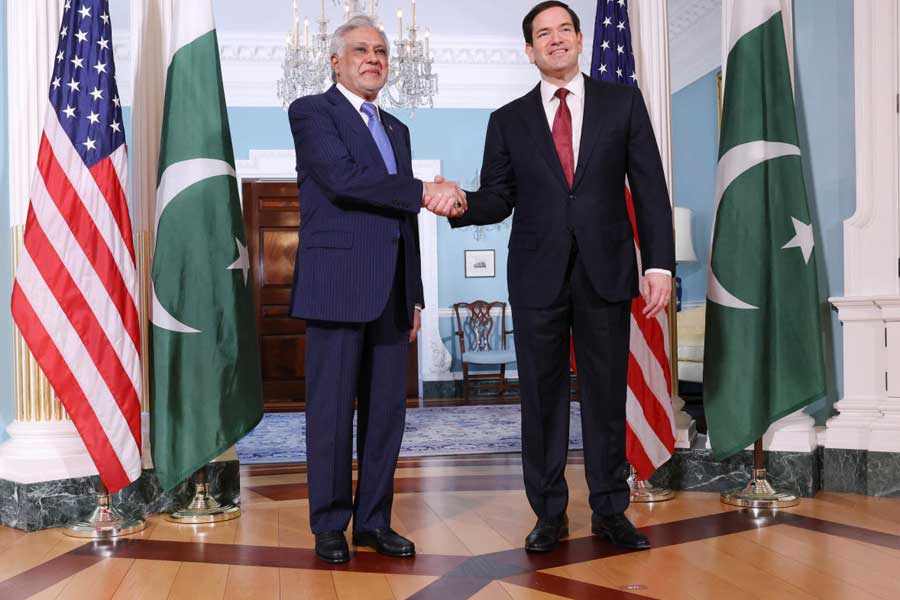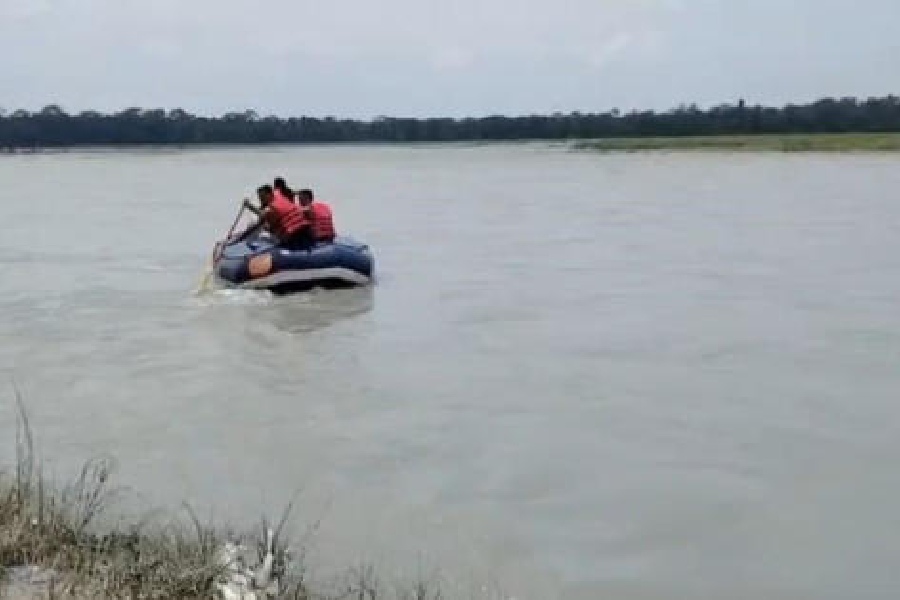 |
| One of the four stupas excavated in Jajpur district. Telegraph picture |
Bhubaneswar, Aug. 7: In 261 BC, Maurya emperor Asoka fought the battle of Kalinga on the banks of Daya near the present-day Bhubaneswar. Correct?
Perhaps not, suggests new evidence dug up by archaeologists.
The battle that sparked Asoka’s transformation from a bloodthirsty king to a humanitarian ruler might have taken place 60 km away, at a site dotted by a few obscure hamlets in Jajpur district.
The findings also seem to establish that the Buddha did visit Orissa.
The theory that the Kalinga battle was fought near the Daya was based on the Asokan rock edict near the Dhauligiri hills on that river’s banks.
But excavations at Tarapur, Deuli, Kayama and Radhanagar in Dharmashala area of Jajpur ? by archaeologists of the Orissan Institute of Maritime and South East Asian Studies ? challenge that notion.
The archaeologists now believe that the battle took place at Radhanagar but will not commit themselves till their diggings are completed.
The excavations, in which the Archaeological Survey of India also took part, have thrown up inscribed pieces of pots that suggest Radhanagar was the capital of Kalinga. The writings apparently date back to the third and second centuries BC.
“Common sense suggests that any war is won after the enemy conquers the capital city,” said Debraj Pradhan, the secretary of the institute. “Since Radhanagar has been established as the capital of Kalinga, it is probable the battle occurred there.”
The archaeologists have also discovered four stupas where the Buddha himself may have preached.
The seventh-century AD Chinese traveller, Hiuen Tsang, wrote that the Buddha visited Orissa and that Asoka later built 10 stupas at the sites where the Lord had preached.
The rock and pot inscriptions the excavation team has found mention “Tapusa”, “Kesastupa” and “bheku Tapusa Danam”. Tapusa and Danam were bhekus or bhikshus (disciples of the Buddha). The story of the Kesastupa is more interesting.
According to the ancient Buddhist text Anguttara Nikaya, two traders from Orissa had met the Buddha after his enlightenment with 500 cartloads of goods and offered him rice cake and honey. The Buddha presented them eight strands of his hair, which they kept at a place in their native place, Asitanjana. There, a stupa was built which came to be known as Kesastupa (hair stupa).
Archaeologists have for a long time believed that a stupa at Tarapur, which is near the site of excavation, could be the Kesastupa. The mention of the Kesastupa in the newly discovered inscriptions buttresses that belief.
“The Kesastupa may have been built by Tapusa,” Pradhan said.
The excavations, which began last December, have thrown up, among other things, square stupas made of laterite blocks, burnt bricks, pillars, pottery and terracotta relics from Asoka’s time.
The discoveries have come as a windfall for the Orissa tourism department. It plans to hold an annual Buddha Mahotsav at the Dhauli hills and the Ratnagiri-Lalitgiri-Udaygiri Buddhist circuit in December.
The department has drafted the Calcutta-based Nirvan Tours and Travel, which deals exclusively with Buddhist tourists and pilgrims, to help with the event.











